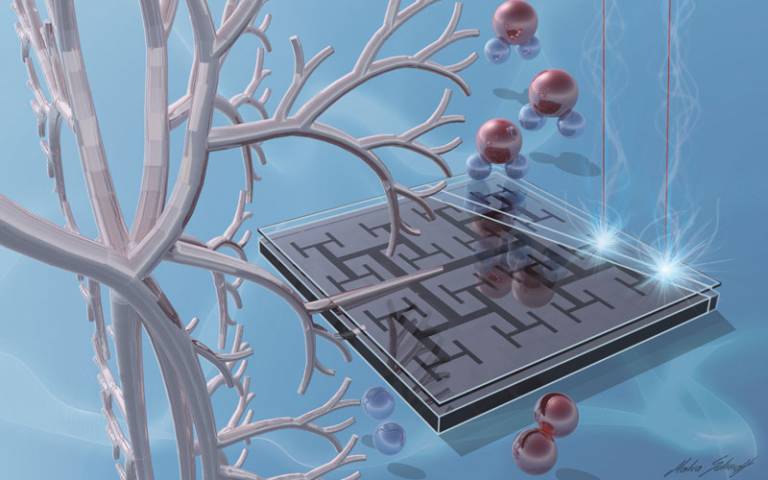Nature-inspired fuel cells
Nature’s solution to reactant distribution problems

14 February 2020
Ensuring uniform gas distribution across the catalyst layer remains one of the on-going challenges impeding broader commercialisation of polymer electrolyte membrane fuel cells (PEMFCs).
This is an inevitable consequence within the framework of the conventional flow field designs, such as serpentine channel, predominantly due to reactant depletion along the channel and over the active area of the electrode.
Researchers from the UCL Centre for Nature Inspired Engineering (CNIE) have recently proposed the nature-inspired flow-field that draws inspiration from the fractal structure and functionality of the upper respiratory tract of the human lung to address this fundamental shortcoming.
The fractal geometry of the human lung ensures uniform distribution of air from a single outlet (trachea) to multiple outlets (alveoli). The convection driven air flow rate in trachea is reduced until it is equal to the diffusion driven air flow rate in alveoli, resulting in uniform distribution of entropy production in both regimes.
Fractal flow-fields can also bridge multiple length scales by adding further generations, while preserving the building units and microscopic function of the system.
Experimental results indicate that the fractal flow fields with N = 4 and 5 generations outperform the conventional serpentine flow fields due to more uniform reactant distribution across the catalyst layer. Uniform gas distribution across the catalyst layer is preserved during scale-up using fractal flow fields.
A major shortcoming of using fractal flow-field is, though, susceptibility to flooding in the gas channels due to slow gas velocity. This problem has led to the development of a nature-inspired water management mechanism that draws inspiration from the ability of the Thorny Devil (Australian lizard) to passively transport liquid water across its skin using capillary pressure.
Our ultimate goal is to integrate this strategy with the fractal flow-fields for robust and reliable PEMFC performance. We have recently received a Discovery-to-Use (D2U) grant from UCL Business to patent and commercialise this technology
 Close
Close

